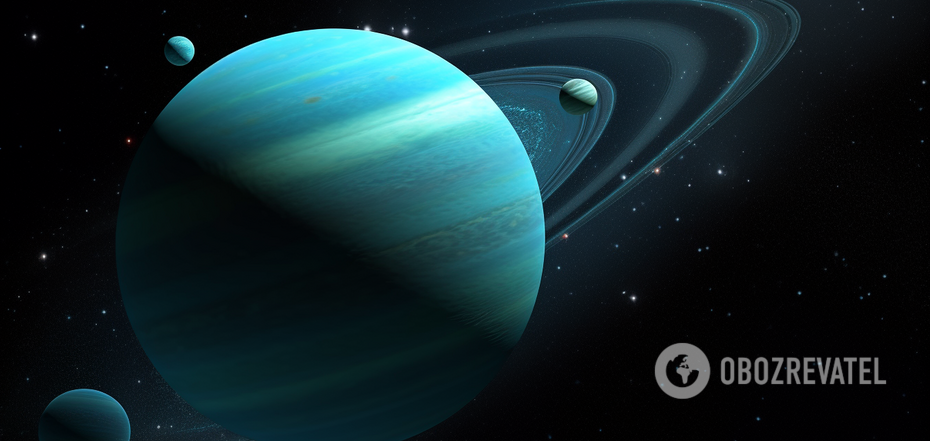Life
NASA announces hidden oceans on icy satellites of Uranus: depth is tens of kilometres
The four largest satellites of Uranus are likely to contain an oceanic layer between their cores and icy crust. Scientists suggest that the depth of the oceans can reach tens of kilometres.
This is stated in a study published in the Journal of Geophysical Research. The discovery was made when scientists re-analysed data obtained by NASA's Voyager 2 spacecraft in the 1980s.
The data was also confirmed by new computer modelling that takes into account information obtained from new missions that have explored icy bodies roughly the same size as Uranus' moons.
The published study also describes in detail the evolution of the internal composition and structure of all five of Uranus' large moons: Ariel, Umbriel, Titan, Oberon and Miranda. In total, at least 27 satellites orbit Uranus.
Scientists have long assumed that Titan is likely to retain internal heat caused by radioactive decay. The other satellites were thought to be too small to retain enough heat to prevent the inner ocean from freezing.
The paper, led by Julie Castillo-Rogues of NASA's Jet Propulsion Laboratory, suggests that four of these satellites contain oceans that can be tens of kilometres deep.
Castillo-Rogues recalled that scientists have previously found evidence of the existence of oceans "in several unlikely places". This suggests that there are mechanisms for keeping water in a liquid state "that we don't fully understand".
The modelling showed that the surfaces of uranium satellites are not as porous as scientists thought and have ways to retain internal heat.
Three factors were also identified that may contribute to the fact that water on the icy moons does not freeze. For example, a potential source of heat was found in the rocky mantles of the moons, which emit hot liquid. Scientists suggest that the oceans on Titan and Oboron may even be warm enough to support habitable conditions.
The second factor that preserves the oceans is the presence of chlorides and ammonia in the liquid, which acts as an antifreeze.
The third factor is the likely salinity of the oceans, which prevents the water from freezing.
In the future, scientists plan to study what is under and on the surface of Uranus' satellites to plan further research.
Earlier, OBOZREVATEL also reported that the bottom of the ancient ocean was discovered under the Earth's surface.
Subscribe to OBOZREVATEL's Telegram and Viber channels to keep up with the latest news.




























